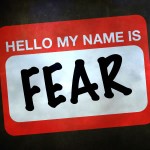By Alabama Department of Homeland Security | From YouTube.com | On Saturday, December 29th, 2012
The department has these suggestions for how to act and what to do in an active shooter event:
DISCLAIMER: An individual must use his/her own discretion during an active shooter event as to whether he/she chooses to run to safety or remain in place. However, best practices for surviving an active shooter event are listed below.
REMEMBER: Law Enforcement’s first priority is to confront and disable the threat.
DEVELOP A SURVIVAL MINDSET
Awareness and Preparation: Take time to understand your surroundings and environment before an emergency occurs.
Ask yourself, “What if?” questions and develop a plan.
IN AN ACTIVE SHOOTER EMERGENCY
Make a decision, trusting your instincts, to take action to protect yourself to survive the situation. You generally will have three options:
Run: Can you safely escape?
Hide: Is there a good place to hide?
Fight: Will you take out the shooter?
RUN FOR SAFETY
If you can and you deem it safe, get out and get to a safe place.
You will have to rely partially on instinct.
Leave belongings behind, but take your cell phone if it is handy.
HIDING IN A SAFE PLACE
Find a hidden location.
Find protection behind furniture if possible.
Find a room that locks if you can.
If possible, close and lock the outside door to the room. Blockade the door with furniture or other heavy objects.
Close the blinds, turn off the lights, remain quiet, silence cell phones, spread out away from other individuals, and move behind available cover.
Stay on the floor, away from doors or windows, and do not peek out to see what may be happening.
Make a plan with others in the room about what you will do if the shooter enters. Make a total commitment to action and act as a team with others.
Do whatever is necessary to survive the situation.
If possible and safe to do so, report the location of the assailant.
IF OUTSIDE WHEN A SHOOTING OCCURS
Drop to the ground immediately, face down as flat as possible. If within 15-20 feet of a safe place or cover, duck and run to it.
Move or crawl away from gunfire, trying to utilize any obstructions between you and the gunfire. Remember that many objects of cover may conceal you from sight, but may not be bulletproof.
When you reach a place of relative safety, stay down and do not move. Do not peek or raise your head in an effort to see what may be happening.
Wait and listen for directions from Public Safety and/law enforcement personnel.
IF SUSPECT IS IN CLOSE PROXIMITY
An individual must use his/her own discretion about when he or she must engage a shooter for survival.
Make a plan as to how you will survive the situation.
Make a total commitment to action and act as a team with others if possible.
Do whatever is necessary to survive the situation.
HELP OUT
Warn others.
Help others escape.
Keep others away from the danger area.
Help the injured.
Help others stay calm.
CALLING FOR HELP
Call 9-1-1 to report the appropriate authorities. Do not assume that someone else has reported the incident. Be persistent; phones may be jammed.
Calmly identify yourself and your exact location. Remain calm and answer the dispatcher’s questions. The dispatcher is trained to obtain the necessary and required information for an appropriate emergency response.
If safe to do so, stop and take time to get a good description of the criminal. Note height, weight, sex, race, approximate age, clothing, method and direction of travel, and his/her name, if known.
If the suspect is entering a vehicle, note the license plate number, make and model, color, and outstanding characteristics. All of this takes only a few seconds and is of the utmost help to the responding officers.
WHEN LAW ENFORCEMENT ARRIVES
When law enforcement reaches you, do not run at them or make sudden movements.
The priority of the first responders will be to identify the shooter. Law enforcement will need to ensure that you are not the shooter.
Do not scream, yell, point, or wave your arms.
Do not hold anything in your hands that could be mistaken for a weapon (including cell phones).
Be quiet and compliant.
Show the officers your empty hands and follow their instructions.
Give the number of shooters.
Give the location and physical description of the shooter.
Give the number and types of weapons.
When it is safe to do so, you will be given instructions as to how to safely exit your location.
—
For the most part I agree with the instructions given here but only for those active shooter events when there are no options for civilian firearm intervention (i.e. in a “gun free” zone).







